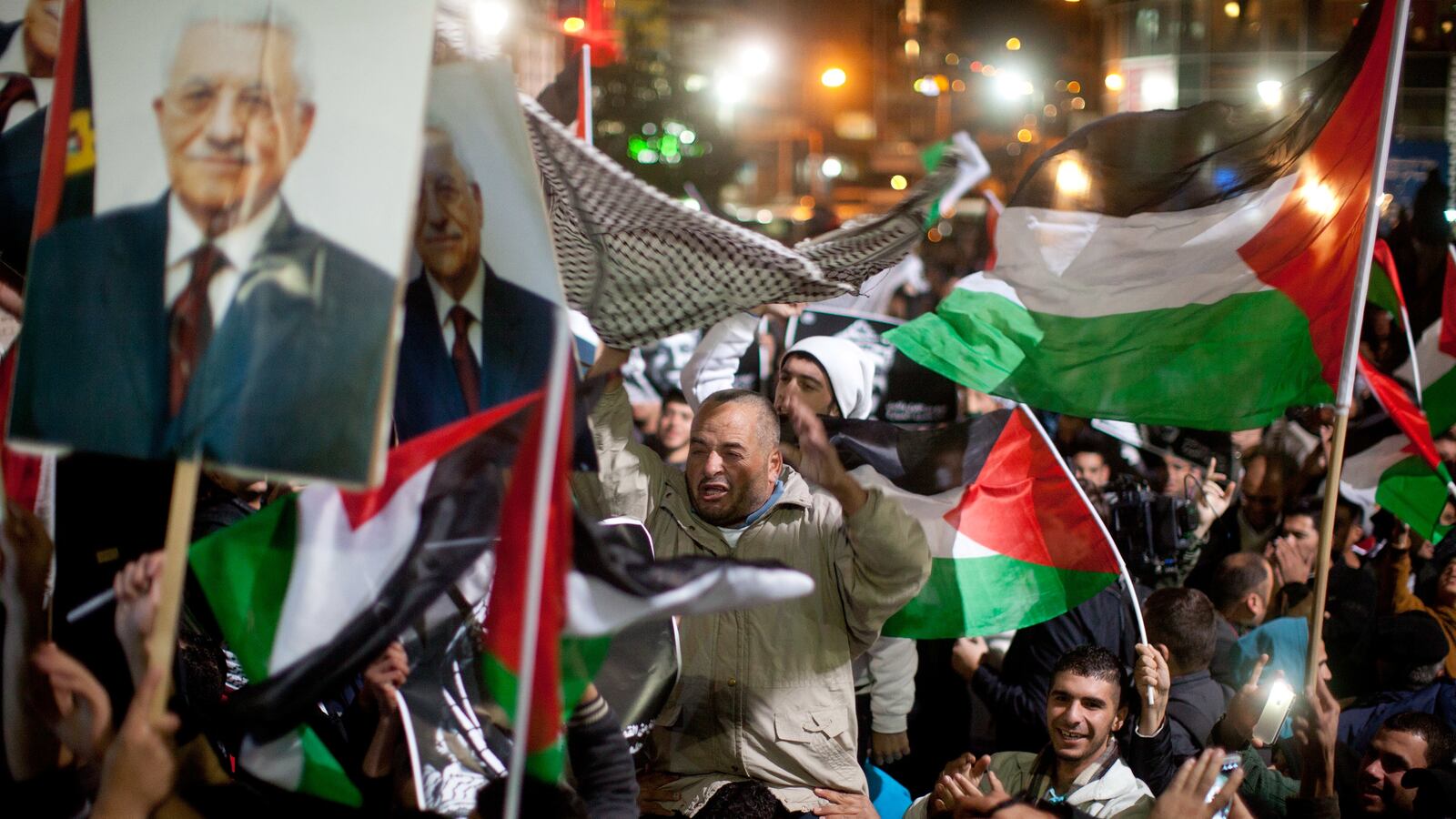My National Post column notes the different approaches to state-building as seen in pre-1947 Israel and today's Palestinian Authority.
Perhaps you’ve forgotten already — the holiday season is such a busy time of year — but a little over a month ago, the UN General Assembly voted overwhelmingly to recognize a “state of Palestine.” As we enter 2013, I find myself wondering: Whatever happened with that?
On Friday, Palestinian Authority president Mahmoud Abbas issued a decree that henceforward the PA would be known as the “State of Palestine.” Henceforward, all signs, stamps and official documents will bear the new letterhead.
Yet here’s what’s puzzling: Only a few days before issuing his proclamation, President Abbas had publicly speculated about dissolving his new state and summoning Israel to reoccupy the whole West Bank. Meanwhile, Palestinian social-service recipients are protesting cuts — and directing their ire not against their own government, but against the United Nations.
From the Ma’an news agency, datelined Dec. 17, 2012, in Ramallah: “The heads of popular committees in refugee camps across the West Bank met Monday in Ramallah and agreed to escalate protests against UNRWA [The United Nations Relief and Works Agency]. Demonstrators will shut down all UNRWA offices on Tuesday to protest the dismissal of over 100 staff at the UN agency for Palestinian refugees, the committee chairman said.”
Is this state-building? After the UN vote, you might imagine that the Palestinian Authority (or “State of Palestine”) would do something to make a reality of its new status. It might seek direct negotiations with Israel. It might advance a proposal for a final settlement. It might initiate confidence-building measures or suggest new areas for useful cooperation between Israelis and Palestinians.
No, nix, not.
The PA (“State of Palestine”) seems to have no plan at all to make a reality of its proud words.
Palestinian nationalism often seems a mirror-image of the Zionist project, but with this one crucial difference: Over the half century before the foundation of the State of Israel, the Zionist movement pre-built the institutions of a state. The Zionist movement built not only a proto-government and the elements of an army, but charitable institutions, educational institutions, even artistic institutions. The Jewish state, when it came, was voted by the UN. But it was in no sense a gift from anybody, let alone an international organization.
When it came, that state did not have the boundaries its most ardent supporters would have wished. Much of the Jewish homeland lay outside the Jewish state, and remains outside that state to this day. But the practice of realism defined the founding generation of the state fully as much as the ideal of self-reliance. They accepted less than they dreamed of in order to achieve at least something of what they aspired to.






